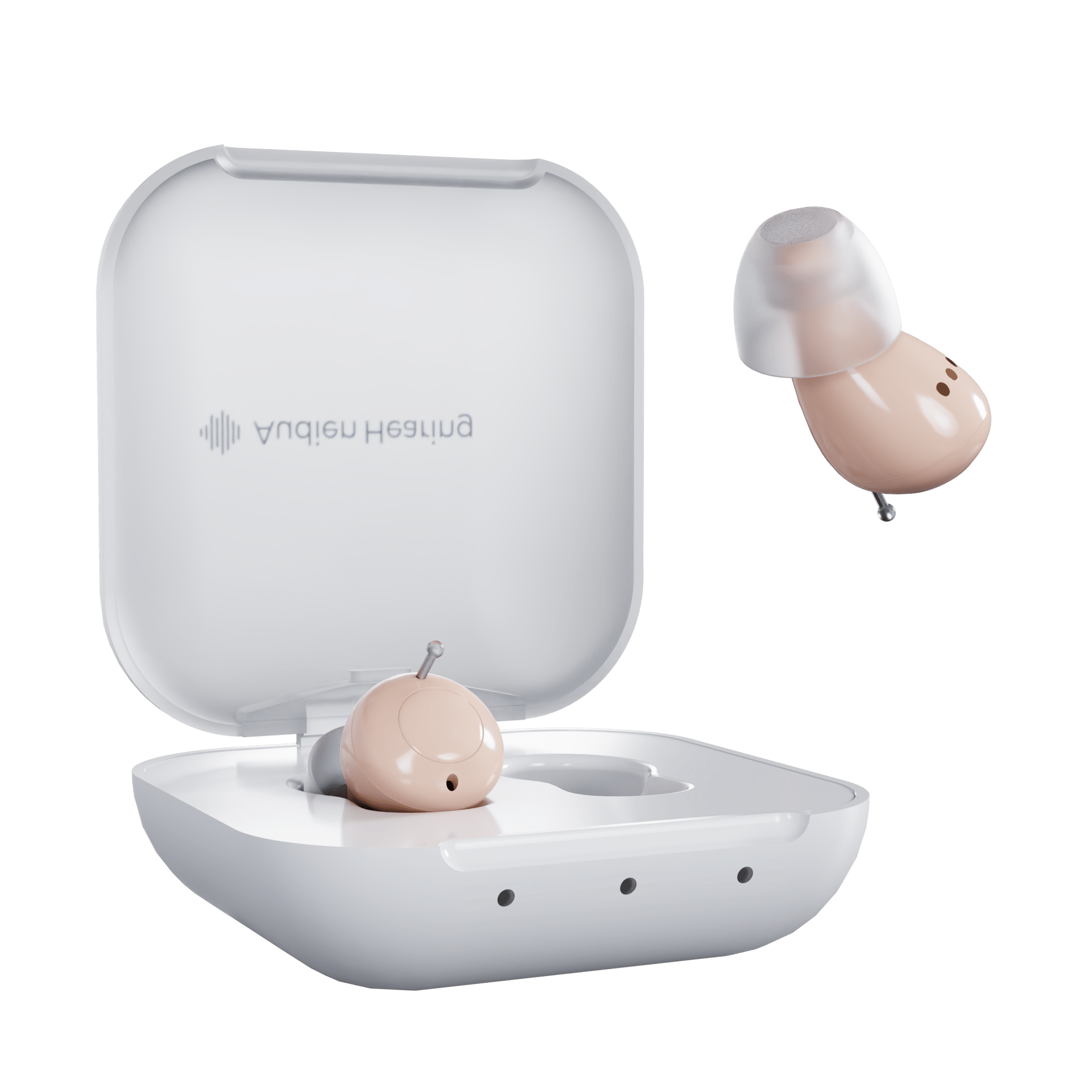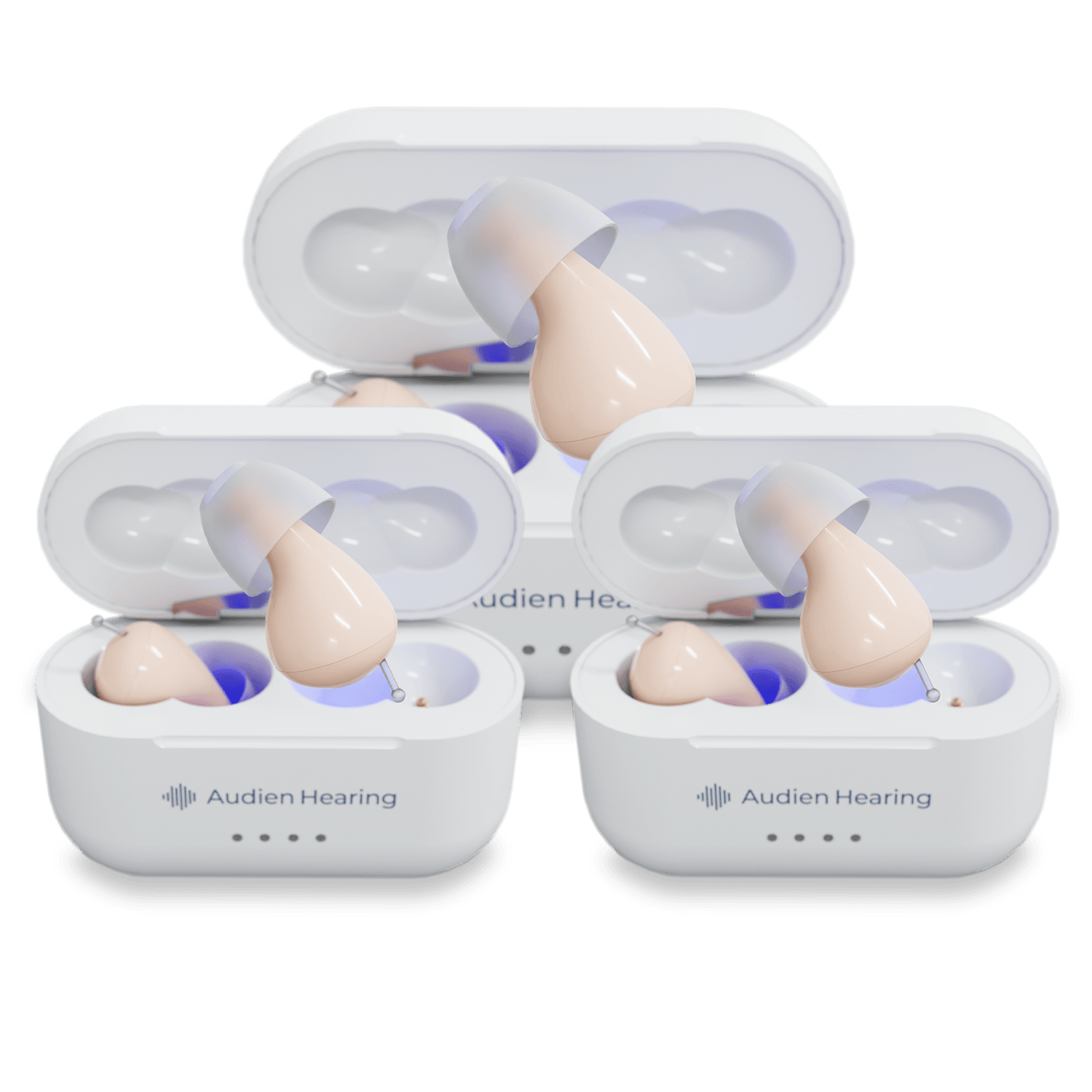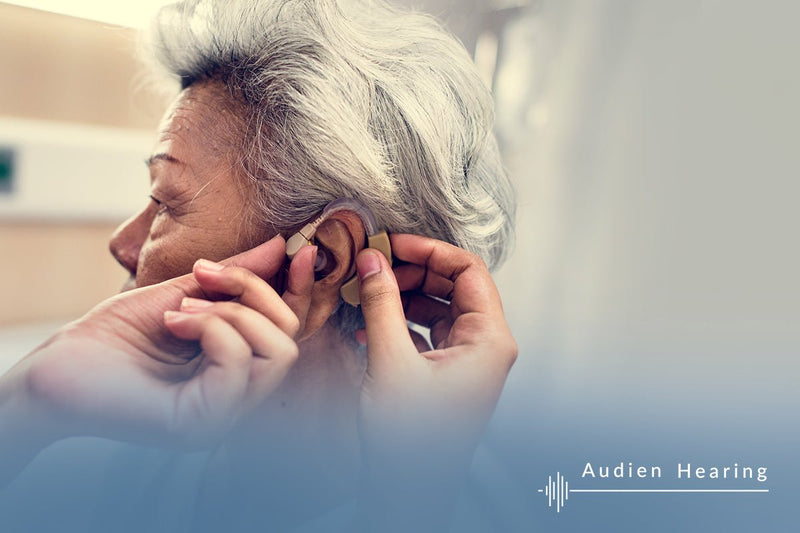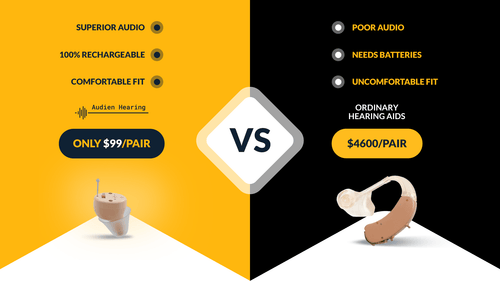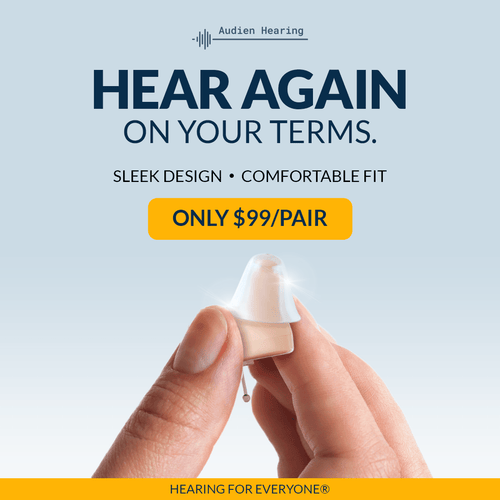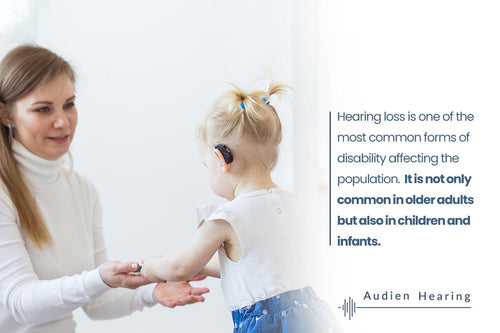
If you’ve had your hearing aids for a while, you may start to wonder when it would be a good time to start looking for replacements. Since technology is constantly changing, there is a wide variety of hearing aid products on the market today that vary in price.
Some questions you may be asking yourself:
Can I afford new hearing aids?
What do I need to know before purchasing a new pair?
Audien Hearing has all the answers you need to know when it comes to purchasing new hearing aids.
Hearing Loss Is Common
Hearing loss is one of the most prevalent disabilities affecting the general population. This shouldn’t come as a surprise as our ears are constantly being used on a daily basis. With heavy use, the chances of hearing loss are likely but it all depends on environmental and situational factors.
How Your Ears Work

Outer Ear
Our ears are composed of three parts that all play a critical role in the process of hearing.
Our outer ear is composed of an auricle. This is the visible part of your ear that protrudes from your head. This structure helps to protect the sensitive equipment inside and acts as an identification marker for every person.
When purchasing used hearing aids, the auricle is very important because it is the entry of the ear canal, and every person has a unique shape.
The Middle Ear
The middle ear houses the tympanic membrane or more commonly known as the eardrum. This structure acts as a barrier between the outer ear and what is known as the tympanic cavity that houses three very important bones: The stapes, incus, and malleus.
These tiny bones play a huge role in our hearing by interacting with incoming sound waves and then vibrating. These vibrations act as unique signatures for each frequency and become a kind of language, translating the frequencies of sound to be read by the inner ear.
The Inner Ear
The inner ear is the site of translation from physical stimulus to electrical impulse.
The vibrations from the middle ear bones are transferred to the cochlea, which is a component of the inner ear housing the auditory nerves. These nerves take the physical input of the inner ear and convert that stimulus into an electrical impulse. The impulse is taken to the brain for further processing, where those frequencies become recognizable sounds.
Replacing Used Hearing Aids
Our ears are incredible organs allowing us to interpret sound waves and frequencies around us as sound.
Loud noises adversely affect the ability of your ear to function and may damage important structures in your ears. Traumatic incidents can affect your hearing by directly impacting your sensory neural pathways or causing conductive hearing loss, and natural deterioration can affect your hearing as well. One in ten people report some level of hearing loss. It becomes more common with age as one in three senior citizens also report hearing loss.
Clearly, your hearing isn’t static. Just like needing a new prescription for your glasses, your current hearing aids may no longer be powerful enough to restore your hearing. Even if your hearing aids are still functional, new hearing aids might be necessary due to changes in your hearing over time. Functions like Audien’s precise tuning and advanced sound processor can make your world sound crystal clear again, even if your hearing has continued to worsen.
New technology can make older devices practically obsolete.
Advanced features like Audien’s background noise minimization, the ability to recharge your hearing aids, and virtually invisible modern earpieces make new hearing aids a smart investment. New models like Audien’s EV1 and EV3 can be so comfortable, you won’t even remember you’re wearing them.
People who are dealing with hearing loss all have different needs when it comes to finding the best pair of hearing aids. Let’s dive into the drawbacks of holding onto your used hearing aids.
Used Hearing Aids
Even after examining your ever-changing needs and discovering advanced hearing aid technologies, there’s also the daily wear-and-tear of your hearing aids that come into play. Most hearing aids only last for three to seven years.
Natural moisture and ear wax will damage your hearing aids eventually no matter how often you clean them. Used models come with existing deterioration from ear wax and the environment, which is why they’re an unwise investment today and for your future. This damage makes them unreliable, meaning they may stop working randomly throughout the day, experience a severe drop in hearing quality, or stop working altogether much sooner than a new model.
If you have older hearing aids, it’s better to donate them to a charity that can repurpose or recycle them into newer models.
Hearing aids themselves are not necessarily expensive. The cost starts to add up when doctors, specialists, and testing to get your diagnosis comes into the mix.
Audien Hearing Aids

You no longer need to rely on used hearing aids to replace broken or outdated models. With Audien, you can replace your old hearing aids with brand new, affordable models. At the end of the day, it is far better to have a new set for your own personal needs than using someone else's.
Audien offers two rechargeable models, the EV1 and EV3, for your hearing aid needs.
The EV1 provides 20 hours of sound per charge and 4 different tip sizes, so you can have the perfect fit tailored to your ear alongside the EV1’s special design for incredible comfort. These virtually undetectable hearing aids reduce background noise and amplify speakers so you can hear what matters, even in the noisiest settings.
The EV3 is an even tinier model, 26 percent smaller than the EV1 for added invisibility. The EV3 has 24 hours of sound per charge and 6 available tip sizes to further customize your fit. With the same crisp sound as the EV1, the EV3 also adds wireless charging, Clear Sound+ technology, and enhanced comfort for a state-of-the-art hearing aid experience.
Both the EV1 and EV3 are leaders in their field, and they’re thousands of dollars cheaper than their contemporaries. With Audien, you can benefit from top-of-the-line hearing aid technology for under $249.
Two Types of Hearing Aids
We divide hearing aids into two major categories or styles: behind the ear (BTE), and in the ear (ITE). These two styles are taken into account during the customization process.
Behind-the-Ear
There are two types of behind-the-ear hearing aids. This style is also more universal.
For all types of behind-the-ear style hearing aids, there will be a piece that fits snuggly behind the ear and is the largest. It is attached to a smaller piece that fits inside the ear. This setup does not require a custom mold for the earpiece to fit in the ear canal. However, it can have custom dimensions for overall size.
When purchasing a used hearing aid, this style will be your safest because the device can be quickly reprogrammed and has the best chances of fitting your ears.
In-the-Ear
On the other end of the spectrum, the in-the-ear (ITE) style poses larger problems for the used hearing aid customer. These hearing aids are crafted from a custom mold of the person’s ear for a perfect, enhanced fit. Audien’s hearing aids are considered an ITE style, which helps us provide the nearly invisible, incredibly comfortable hearing aids our users know and love.
You can reprogram ITE hearing aids to your specific needs. However, the chances of this device fitting your unique ear shape are much smaller.
These units are tiny, composed of one solid piece, and sit comfortably in your ear canal.
Audien Hearing Has You Covered
Purchasing new hearing aids to replace your old ones can be overall beneficial to gradually improving your hearing. Purchasing custom hearing aids is an expensive process and, for some people, is not an affordable option.
The cost of an Audien's hearing aids are high-quality, one-size-fits-all, over-the-counter hearing aids that are affordable and dependable over your old hearing aids.
"I highly recommend considering a new set of Audien hearing aids rather than using a used pair, no matter who used them previously or how much they cost initially." - Drew Sutton, MD, Board-Certified Otolaryngologist.
We work hard to provide an over-the-counter hearing aid with immense benefits and will not break the bank. If you want to learn more about hearing aids and how they can improve your hearing, we have all the resources you need to keep you informed.
Sources:
Hearing aids: How to choose the right one | mayoclinic.org
Hearing Aids — Styles/Types & How They Work | NIDCD
Hearing Loss: Hearing Aid, Causes, Symptoms, Treatment & Types | Cleveland Clinic


